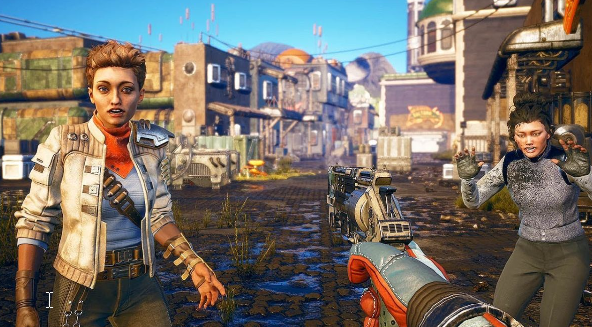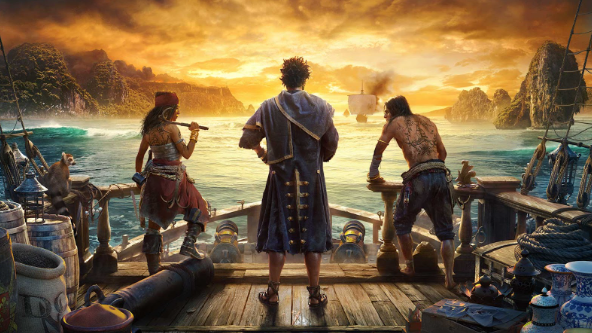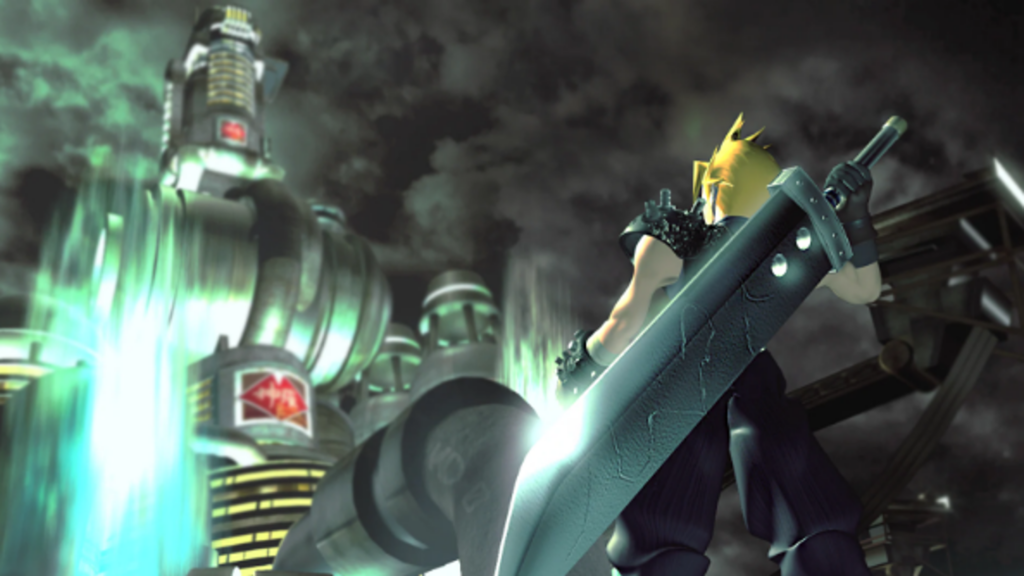Each time a company like Sony or Microsoft announces its new AAA-title release, players worldwide are not surprised, they just take it for granted. In fact, an average player thinks the more ‘A’ letters are there in the title type, the cooler it is. The AAA abbreviation itself turned into a quality standard, which industry is following. But what exactly does triple-A mean? Where did it come from? What are its pros and cons? Finding out in the topic below.
Contents
Where did abbreviation come from?
The AAA term started being used by game developers in the late 90s. At that time, whoever used it was describing a high-level project that was using the best available technologies and cost a great sum of money and effort of many people.
One of the first games called the AAA was Final Fantasy 7, which had a budget of approximately $40M. The most of the budget was spent on high-tech CGI-movies realization, recording the orchestral music and dynamic camerawork. What’s more, 3 months of PR cost previously unthinkable $100M and included TV ads, various posters, flyers and the collaboration with Pepsi.
Ever since that, such a meaning became worldwide and nobody wanted to miss any triple-A expensive project of high quality. Against this background, people have forgotten that the term had initially been of an economic nature in a variety of industries, including the gaming industry. In the early days of video games, studios used to have a couple of dozen developers, while a successful project could be made by effort of only one person. And so, depending on costs in financial statements, the projects were divided into three levels: A, B, C.
Nevertheless, technologies were developing, allowing to make a mighty industrial upswing, increasing the quality of graphics, design, soundtrack and gameplay mechanics. The quality boost along with the growing availability led to a bigger audience involvement and increased the industry’s earnings. The media entertainment industry’s potential was quickly noticed by investors and budgets got bloated.

All of these led to the significant increase in the price of development. Studios had to hire more specialists, spend huge sums for marketing, salaries, licenses, taxes, rents etc. As a result, the costs stopped fitting the classic ‘A-B-C’ system, as new budgets were exceeding previous A-costs multiple times. Right in the 90s, the average budget for a gaming blockbuster reached the notch of $10-15M. Such projects were far away from common metrics.
Economists solved the problem by simply adding another letter ‘A’, meaning the increase in the costs. Whereas the marketers played their role, claiming the AAA to be a synonym of luxury, quality and the year’s main release. The term was eventually accepted after the complete success of such AAA-titles as Halo, Zelda, Call of Duty, Grand Theft Auto, Shenmue and many others.
What’s bad in AAA?
As it was mentioned earlier, an AAA-project is usually made by a big studio and has a budget of several $M. Such projects are oriented on a wide audience, have large-scale advertising campaigns and are expected to bring profit, significantly covering its costs.

You may often find such an AAA-explanation on the internet:
‘ A lot of time;
‘ A lot of resources;
‘ A lot of money.
This explanation is not the only one, but it depicts the main points of such projects. The AAA-standards itself have significantly changed with the times. Nowadays AAA is far away from the AAA for PlayStation 1, not only visually but also in terms of time, money and resources spent. The problem is there’s no rule or boundary, when it’s already an AAA. The same tag has projects like GTA which cost $265M and Control, whose development is valued between â¬20M to â¬30M.
This created a problem of high expectations and unwillingness to take a risk. The first was formed because of associations not only with a product of high quality but also with the latest technologies. The logic was simple: if there was a lot of money spent, the project should be of a very good quality. After all, the ads can’t lie, right?

The point is that ‘of a very good quality’ for players and publishers are not the same. Studios surely need to cover all their costs, since they don’t actually have a right to lose, as it most probably will result in a company’s closure. And because of the inflation and increasing game prices the studios have to sell millions of copies to have at least some profit. Thus, Radical Entertainment was closed after Prototype 2 was called a financial fiasco, despite there being a million copies sold in a very short time and a couple of million Control copies sold was considered to be an unsatisfying result.
Because of that, the developers quickly lost their desire to implement new mechanics and revolutionary, but risky ideas, because they may not pay off. It’s much safer to experiment on the existing ones, not to change them. The main parameter of quality became graphics, detailed animations and soundtracks. This, in its turn, led to continuous accusations of monotony for all big projects. Unsurprisingly, some people call AAA a threat for the industry.
Whether it’s a real threat or not will be clear only with the times. However, according to analytics, after the PS3 and Xbox 360 release, the number of companies capable of creating AAA-class projects decreased from 130 to 20. At the same time, the number of specialists involved remained the same. That’s how harder it became to create an AAA project. And this tendency barely changes in the near future.
What’s the difference between triple-A and double-A?
If there’s a triple-A, there should be a double-A, right? Obviously, projects of that category possess a smaller budget, which is still bigger than indie’s, but less than blockbuster’s. Its developers try to reach the same level of design as the top-notch projects have, but as a rule, they lag behind in one or several areas, such as gameplay, plot, graphics, levels design, balance and many more.
To help a studio sell a double-A project may only a great realization of an original idea, otherwise it won’t stand a chance. A great examples of that are The Outer Worlds, ELEX, Xenoblade Chronicles and Hellblade: Senua’s Sacrifice.

However, after 2010 the middle interlayer of video games has actually died out. The majority of studios re-oriented for creating either high-class expensive AAA-projects or cheap, but also popular indie-titles. In 2011 the situation was precisely described by legendary game designer Cliff Bleszinski: ‘..the middle class of video games is dead and projects that don’t stand out against the competition will end up a commercial failure’.
Unfortunately, the resources (or sometimes developers skills) are often not enough to create a project that can offer a player something new or breathtaking. And because of that the double-A segment often stays a simple copy of the triple-A. Maybe it’s one of the reasons why gamers prefer to buy a new episode of a famous video game series. Most double-A games lack something, so you can actually meet polar-different opinions on some GreedFall, which attracts players with its setting but has a disappointing gameplay. In fact, hardly a couple of decent double-A games are released a year.
And what about AAAA?
As it was said previously, the development is getting more global, expensive and longer. The costs of many famous titles and its PR-campaigns have already exceeded hundreds of million dollars. In its turn, it led to new terms creation: AAA+ and AAAA. It’s believed to be a full-time AAA project at a fabulous cost. They also have continuous after-release support with paid add-ons and updates, allowing the studio to earn additional profit from the already sold title.

However, most players think such a term is just a publicity stunt and an attempt to stand out against the competition. Thus, the AAA+ term was used by CD Projekt Red to additionally emphasize a sophisticated high quality of their products. In 2012, the EA management claimed Dead Space 3, which was in a development stage at that time, to be a real AAAA because of its quality level significantly excelled all the industry’s standards. But it didn’t save Visceral Games from the closure. The similar way of PR was used by Glen Schofield, when he was promoting his The Callisto Protocol. While the project was showing really great visuals, the gameplay had many questions.
Ironically, almost every project that was called a quad-A class got into a productional hell. Enough mentioning Beyond Good & Evil 2, Skull and Bones or GTA 6, or even never released Perfect Dark, proudly being called by its authors ‘the first AAAA game’.
Eventually the term will be accepted after the real groundbreaker game’s release. But for now it seems to continue to be just a marketing stunt.
What about indies?
The term ‘triple-I’ is relatively rare and is used to describe an indie blockbuster. Such projects are partly or fully financed independently, developed by small teams and offer bold innovations and new ideas. Commendably, small budgets don’t hinder them from realizing great ambitions, comparable with AAA’s.
In fact, an indie title’s creation became real due to development of crowdfunding, a phenomenon when players financially support the not yet released project. Moreover, the worldwide platforms like Steam of COG provided such projects with attractive conditions of information placement, letting the audience know more about the projects. Without this, such hits as Firewatch, The Witness, Papers, please and many others were hardly ever released.


